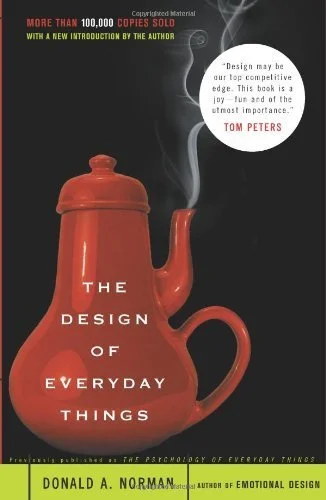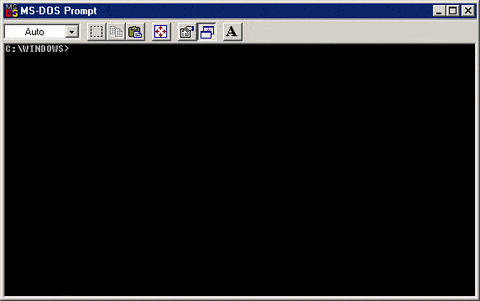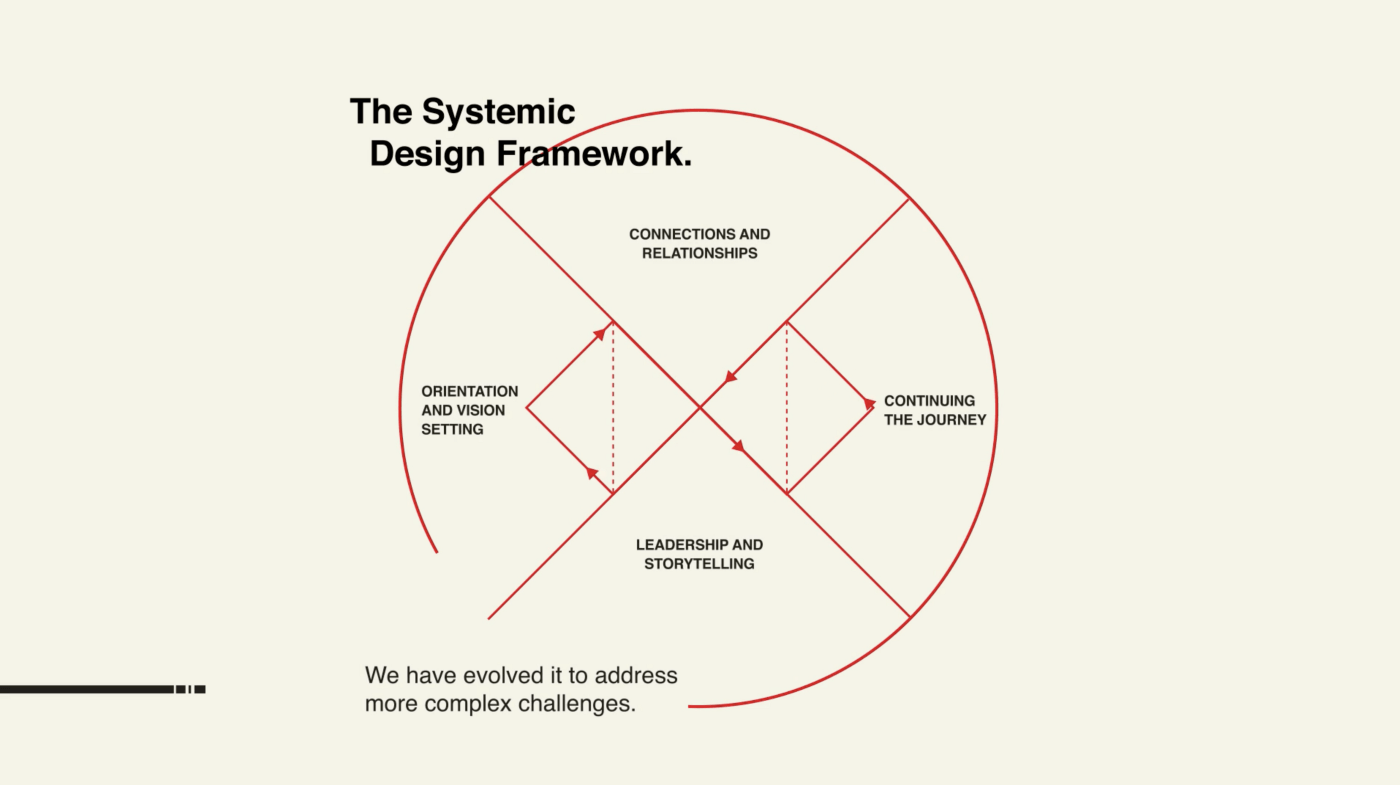The Design of Really Big Things: Planet-Centric Design
How designers are evolving beyond user-centered design approaches to tackle complex problems like climate change
Reading time: 22 minutes
Can designers help solve systemic problems like climate change?
Problems like climate change are becoming problems designers are starting to make a dent in. But personas and "how might we..."s aren't the tools you will use to tackle climate change.
Most UX design methods were meant to help you design everyday things.
The Design of Everyday Things
It was 1988, and here a few notable events:
The concept of the World Wide Web was discussed for the first time
The first McDonald’s opened up in a communist country
You could buy a tank of gas in the U.S. for $12.60
If you picked up a magazine in 1988, you would have seen photos like this:
[from A Look Back at 1988 by the Atlantic]
The world was preoccupied with avoiding nuclear war and buying lots of shiny, new things that booming post-war capitalism was eager to provide.
That same year, Don Norman published an early version of the Design of Everyday Things.
The environment wasn’t necessarily on Don Norman’s mind…bad design was.
The absurd red kettle on the cover that would burn any user was the perfect analogy for how poorly computers were designed for users at the time.
Don's revolutionary idea: When people can't use things, it's not their fault. It's a faulty design because the thing isn't intuitive.
Don Norman called his methodology “user-centered design,” a term coined by Rob Kling in 1977. [source]
Don set out some principles that completely changed the design mindset from visuals to functionality.
For context, this is the kind of unintuitive software Don was dealing with in 1988:
[operating systems like MS-DOS dominated the day in 1988]
The 6 Principles of User-Centered Design
Norman outlined 6 basic principles of user-centered design (UCD).
Design is based upon an explicit understanding of users, tasks and environments.
Users are involved throughout design and development.
Design is driven and refined by user-centered evaluation.
Process is iterative.
Design addresses the whole user experience.
Design team includes multidisciplinary skills and perspectives.
User-centered design proved very useful for designing things better. And designing things better is always good for business.
It's been almost 35 years since this book helped design shift from aesthetics to usability. Designers are shifting their medium from visuals to behavior.
That's been a very good thing for designers, and the demand for new experiences helps you have a comfortable salary designing lots and lots of things.
How has that been working out for the planet?
[workers burn computer trash in Ghana, from e-wasteland on Youtube]
For the past 100 years, designers have been "solving" problems by designing everything and anything we're told...more things than we could ever truly enjoy.
The everyday things are piling up. It’s estimated that 5.3 billion mobile phones will be thrown away in 2022. [BBC, 2022]
Even software designers aren’t without blame. There are 7.2 million data centers worldwide, and experts estimate that data storage and transmission in and from data centers use 1% of global electricity. [DW, 2022]
All that software you're designing has an environmental cost in the hardware that runs it and the data centers that power it. The design of everyday things like apps is causing very big changes to our climate.
Planet-minded designers like Victor Papanek saw this coming before 1988, leading Victor Papanek to say these famous words in 1971: "There are professions more harmful than industrial design, but only a few."
Today, the environmental cost of data centers, planned obsolescence, and digital waste means soon we can say that there are professions more harmful than digital product design, but only a few.
We can go further than user-centered design. The only problem is that we don’t know what to call it yet.
The Design of Really Big Things
Luckily, new sides of design have been developing methodologies that offer a way into big problem spaces like climate, governance, and healthcare.
This design practice sharpened its tools through organizational challenges, government innovation projects, and business strategy. It's finally starting to emerge as a cohesive practice.
I’m calling this the design of really big things because the real name is still settling. Here are some names for this practice that are likely to last:
Planet-Centric Design
Sustainable Design
Humanity-Centered Design
Environmentally-Conscious Design
Eco-Design
(insert your term here) Design
Whatever you call it, you must think bigger than everyday things. You need bridging principles to help you think big enough to tackle the climate.
7 Principles of Planet-Centric Design
If you want to transition from user-centered to planet-centered design work, these principles and practical methods can help. These principles come from service, strategy, futures, and systems design practices. And you’ll need all of them to take your practice planet-centric.
Principle #1: The world can be redesigned.
Principle #2: Design systemic change.
Principle #3: Design for longer timelines.
Principle #4: Measure the consequences
Principle #5: Iterate and adapt
Principle #6: Make the intangible tangible.
Principle #7: Design through others.
Principle #1: The world can be redesigned.
The first principle of designing big things is that the material world is a product of design and can be redesigned. The world is like this because somebody designed it to work like this.
We must accept our ability to change things. Otherwise, why bother?
There is an inconvenient statistic that 80% of the environmental impact of a product is set in the design phase:
“It is estimated that over 80% of all product-related environmental impacts are determined during the design phase of a product. Eco-design aims at reducing the environmental impact of products, including the energy consumption throughout their entire life cycle.”
On your watch, decisions are being made that make climate change worse. Designers don't drive most of those decisions, but you influence them.
Along with the power of design comes responsibility. You can't spend your whole career trying to get a seat at the table while denying the influence that seat represents.
Designers should take ownership of both the power and responsibility of design before they can tackle things like climate.
Principle #2: Design systemic change.
The second principle of designing big things is zooming out to see the entire ecosystem. The design process of everyday things is often represented linearly, but it has always been circular and systemic…whether you realize it or not.
You can design a chair without considering the landfill, but whether you include it in your process or not, the circle completes itself.
Designing for big problem spaces is more like designing a rainforest than a car...you need to consider a complex ecosystem, not just a one-way assembly line process.
Designing products that don’t end up in the landfill is more critical than designing an unboxing experience that will “surprise and delight.”
Even the Double Diamond is evolving to correct the over-simplification of a linear approach to design. Note the circularity and systems language in the evolved Double Diamond
[from the Evolved Double Diamond by Cat Drew, Chief Design Officer at the UK Design Council]
Design has a long history in systems before Don Norman coined UX in the 90s. Even the original Double Diamond is based on a systems design model.
Planet-centric design is pioneered by futurists, architects, and systems-minded designers like Buckminster Fuller and Victor Papanek, who pioneered planet-friendly approaches to design in the 1970s.
Try using the Systemic Design Toolkit to go non-linear with your project work so you can harness complex problem spaces.
Today, systems thinking practices and circular business models can help designers to prevent waste and become more planet-centric with their design approaches.
Principle #3: Design for longer timelines.
Design is a future-oriented practice, but projects like climate work on much longer timelines with multiple horizons.
There won't be a clean release of a systemic solution, and there probably won't be a smooth transition either. You will have to work to manage the transition if you want to achieve your desired impact, and that takes time.
If you're designing in systems, you have to be patient. You might have to design for multiple horizons all at once.
The Three Horizons Framework is an excellent way to communicate and maage multiple timelines. This framework helps us understand the complicated nature of managing transitions in big projects.
With systems, don't expect any project to be "done." Always be looking ahead to the possible horizons of change ahead.
Principle #4: Measure the consequences.
To create lasting behavioral change, measure the long-term consequences while staying open to unintended consequences that may become future designs.
The implications of your work may not even be measurable for many years, so never stop gathering data. Only by measuring the long-term impact can we understand the implications of our design work.
Consequence scanning is a helpful tool for checking the long-term impacts of products. It’s a method that adds purposeful fiction to the design process so that you can check the long-term effects of your product design.
Luckily, data tools are becoming cheaper and more widespread. Build data literacy so that understand and avoid the negative consequences of bad design.
Principle #5: Iterate and adapt.
When designing big things, your plans rarely match reality. It’s difficult to predict the future, and the longer the timeline, the more uncertain that future becomes. You can deny the emergence of complex working environments or harness it to improve your work.
Let’s say you want to design a better neighborhood. You can’t expect to get everything right the first time. By planning for multiple iterations, you can adapt your design to the behavior that emerges from the first iteration.
One way to harness emergence is through experimentation. Experiments are a key way to adapt based on real-world behavior. Try using the Experiment Cards to test your assumptions and plan for adaptation.
If you think of every iteration as an experiment, you can embrace the emergent nature of systems.
Principle #6: Make the intangible tangible.
Designing big things is still designing, and one of the key skills is turning intangible concepts into tangible artifacts. Artifacts like maps, visuals, and storyboards will always be a part of design, and you can use these same artifacts when tackling big problems.
Design can make thoughts that aren't fully formed explicitly through visuals and artifacts. The measure of the "goodness" of a design artifact ceases to be about its inherent beauty and it becomes about its ability to imbue change.
One way you can do this is to create a "boundary object" to help transition change. The boundary object is a flexible and tangible artifact deliberately employed by actors to drive transitions.
Boundary objects help different stakeholders communicate in a common language, showing, rather than telling, how to get to the next phase.
Principle #7: Design through others.
The last principle of designing big is that it’s more than you. You shouldn't try to do it on your own.
The myth of the design superstar here to save the world doesn't have a place in big problem spaces. As the challenges get bigger, egos must get smaller.
That's because designers of really big things don't design things themselves. They design the path and adapt to the work of others.
For example, your work might shift from delivering solutions for a client to facilitating solutions from your stakeholders. Your work in planet-centered design might look more like education than production.
When designing really big things, your focus is on how stakeholders interact and shape design artifacts. Workshops and collaborative activities are the perfect way to design through others.
There are useful methods for facilitating really big things like the Theory of Change, a framework for change used by many non-governmental organizations.
Other Sustainable Design Principles
I hope these seven principles will help you apply your everyday design skills to bigger things like climate change. These are helpful guidelines for design work in systems, strategy, and culture.
My seven principles might get you started, but you will need all the help you can get. Check out these lists of related principles.
Humanity-Centered Design Principles by Don Norman
Even Don Norman is adapting his user-centered principles to be more planet-centric. On his blog, he writes about how to do what he calls “humanity-centered design.”
Solve the core, root issues, not just the problem as presented (which is often the symptom, not the cause).
Focus on the entire ecosystem of people, all living things, and the physical environment.
Take a long-term, systems point of view, realizing that most complications result from the interdependencies of the multiple parts and that many of the most damaging implications upon society and the ecostructure only reveal themselves years or even decades later.
Continually test and refine the proposed designs to ensure they truly meet the concerns of the people for whom they are intended.
Design with the community, and as much as possible support designs by the community. The professional designer community should serve as enablers, facilitators, and resources, aiding the community to meet their concerns.
Read more about Humanity-Centered vs. Human-Centered Design by Don Norman
The Four Movements of Planet-Centric Design by Sam Huber
[from What is Planet-Centric Design?, illustration by Giulia Nina Gasser]
From humans to planet
From quantity to quality
From short- to long-term
From market fit to planet fit
Read more here in What is Planet-Centric Design? by Samuel Huber
Sustainable Design Principles via Wikipedia
Wikipedia gathers a very specific set of principles for designing sustainably that can also be helpful:
Low-impact materials: choose non-toxic, sustainably produced, or recycled materials that require little energy to process
Energy efficiency: use manufacturing processes and produce products that require less energy
Emotionally durable design: reducing consumption and waste of resources by increasing the durability of relationships between people and products, through design
Design for reuse and recycling: "Products, processes, and systems should be designed for performance in a commercial 'afterlife'."
Targeted durability, not immortality, should be a design goal.
Material diversity in multicomponent products should be minimized to promote disassembly and value retention.
Design impact measures for total carbon footprint and life-cycle assessment for any resource used are increasingly required and available. Many are complex, but some give quick and accurate whole-earth estimates of impacts. One measure estimates any spending as consuming an average economic share of global energy use of 8,000 BTU (8,400 kJ) per dollar and producing CO2 at the average rate of 0.57 kg of CO2 per dollar (1995 dollars US) from DOE figures.
Sustainable design standards and project design guides are also increasingly available and are vigorously being developed by a wide array of private organizations and individuals. There is also a large body of new methods emerging from the rapid development of what has become known as 'sustainability science' promoted by a wide variety of educational and governmental institutions.
Biomimicry: "redesigning industrial systems on biological lines ... enabling the constant reuse of materials in continuous closed cycles..."
Service substitution: shifting the mode of consumption from personal ownership of products to provision of services that provide similar functions, e.g., from a private automobile to a carsharing service. Such a system promotes minimal resource use per unit of consumption (e.g., per trip driven).
Renewable resource: materials should come from nearby (local or bioregional), sustainably managed renewable sources that can be composted when their usefulness has been exhausted.
Read more about Sustainable Design by various authors on Wikipedia
Conclusion
Today's designers are grappling with really big problems like climate change, and that is changing the way we do design. Nobody is claiming to have the answer, but we are claiming that a better world is possible.
We may not know precisely what the solution to climate change will be, but that’s the perfect place to be at the beginning of this critical project.














